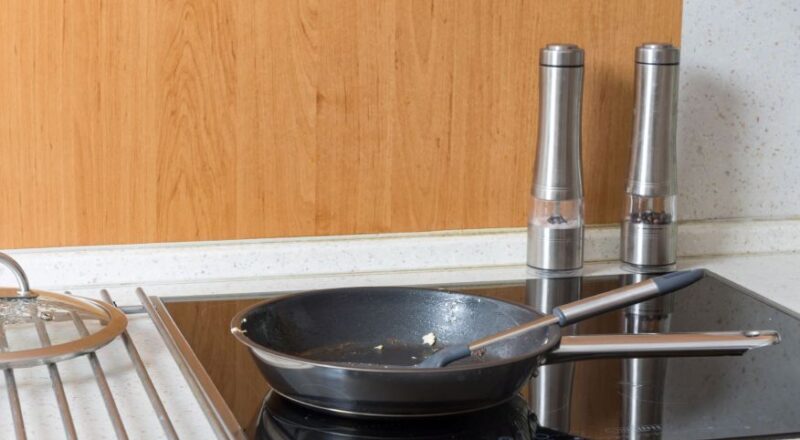When it comes to cooking with cast iron on an induction stove, finding the ideal induction power setting is crucial for achieving the best results. Induction cooking has become increasingly popular due to its efficiency and precision. However, not everyone is familiar with the nuances of using cast iron on an induction cooktop. In this article, we will explore the factors that influence the ideal induction power setting for cast iron and how you can optimize your cooking experience.

What Makes Cast Iron Special?
Cast iron cookware has been a staple in kitchens for centuries. Known for its durability and superior heat retention, cast iron is perfect for a variety of cooking methods, including frying, baking, and simmering. Its ability to maintain a consistent temperature makes it a favorite among chefs and home cooks alike.
Compatibility with Induction Cooktops
Induction cooktops use electromagnetic fields to heat cookware directly. This means that the cookware must be magnetic to work with an induction stove. Fortunately, cast iron is naturally magnetic and an excellent choice for induction cooking.
Determining the Ideal Power Setting
The ideal induction power setting for cast iron can vary depending on the dish you’re preparing. However, a general guideline is to start at a medium power level and adjust as needed. Here are some factors to consider:
- Type of Dish: For delicate dishes, such as sauces or eggs, a lower power setting is recommended to prevent burning.
- Preheating: Cast iron requires preheating. Start at a lower power setting and gradually increase to avoid thermal shock.
- Cooking Time: For dishes that require long cooking times, a lower power setting helps maintain even heat distribution.
Common Mistakes to Avoid
Using the wrong power setting can lead to uneven cooking or even damage your cookware. Avoid these common mistakes:
- Too High Heat: Starting at a high power setting can cause food to stick or burn.
- Skipping Preheating: Not preheating the cast iron can result in uneven cooking.
Benefits of Using Cast Iron on Induction
There are numerous benefits to using cast iron on an induction stove. These include:
- Energy Efficiency: Induction cooking is more energy-efficient than traditional gas or electric stovetops.
- Precise Temperature Control: Quickly adjust the power setting for precise cooking.
- Even Heat Distribution: Cast iron provides consistent heat, reducing hot spots.
Expert Tips for Optimal Cooking
To make the most of your induction cooking with cast iron, consider these expert tips:
- Use a Lid: Covering the pan can help maintain heat and reduce cooking time.
- Monitor Temperature: Use an infrared thermometer to ensure the pan is at the desired temperature.
- Season Your Cookware: Proper seasoning enhances non-stick properties and prevents rust.
Understanding Power Settings
Most induction cooktops have power settings ranging from 1 to 10 or low, medium, and high. Understanding these settings is key to achieving the perfect induction power setting for cast iron. Start with medium settings and adjust based on your needs.
Maintaining Your Cast Iron Cookware
Proper maintenance is essential for keeping your cast iron in top condition. Here are some maintenance tips:
- Clean Immediately: After cooking, clean your cast iron with warm water and a brush.
- Dry Thoroughly: Prevent rust by drying the cookware completely after washing.
- Re-Season Regularly: Apply a thin layer of oil to maintain the non-stick surface.
Choosing the Right Induction Cooktop
When selecting an induction cooktop for your cast iron, consider the following:
- Power Output: Ensure the cooktop has sufficient power for your cooking needs.
- Size of the Cooking Zone: Choose a cooktop with zones that match your cookware size.
- Features: Look for features like power boost and precise temperature control.
For more detailed insights on induction cooking, check out this informative guide.
Conclusion
Finding the ideal induction power setting for cast iron may take some experimentation, but the results are worth it. By understanding your cooktop settings and your cast iron cookware, you can achieve perfectly cooked meals every time. Remember to consider the type of dish, preheating, and cooking time when adjusting your power settings. With these tips in mind, you’re well on your way to mastering induction cooking with cast iron.

FAQs
1. Can I use cast iron on all induction cooktops?
Yes, as long as the cookware is magnetic, it can be used on induction cooktops. However, ensure that the size of the pan matches the cooking zone for optimal performance. For more information, you can refer to Matching Pan Size.
2. What is the best way to preheat cast iron on induction?
Start at a lower power setting and increase gradually. This helps prevent thermal shock and ensures even heating. Learn more about Cold Spots in cast iron on induction.
3. How do I prevent my cast iron from smoking?
Ensure the pan is well-seasoned and start at a lower power setting. If the pan begins to smoke, reduce the heat. Explore more tips on preventing Cast Iron Smoking.
This article contains affiliate links. We may earn a commission at no extra cost to you.

